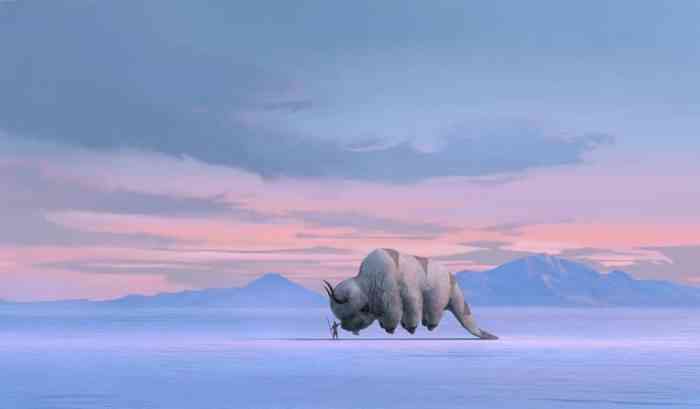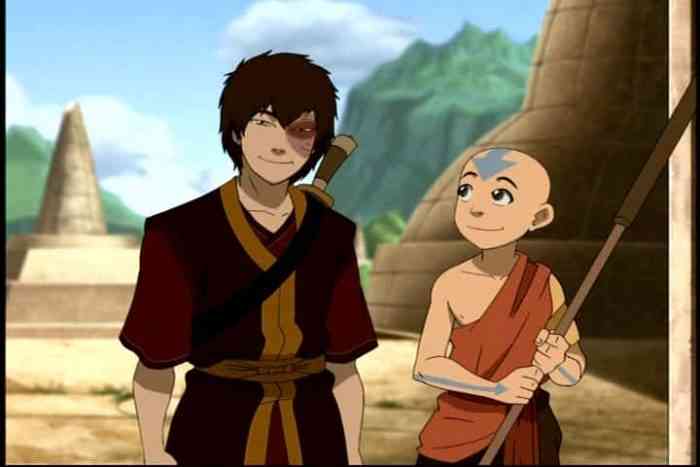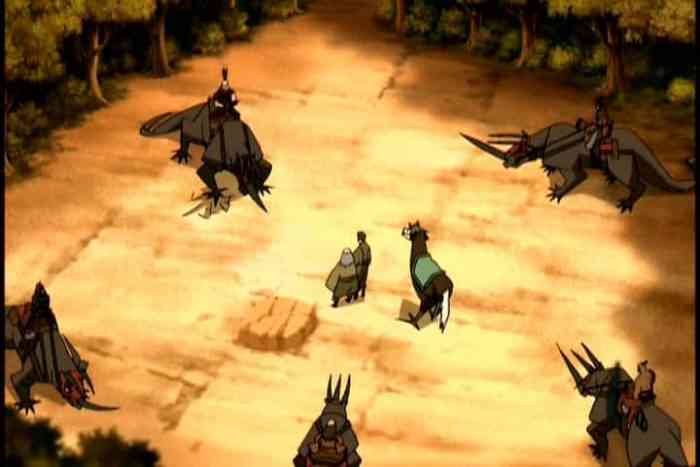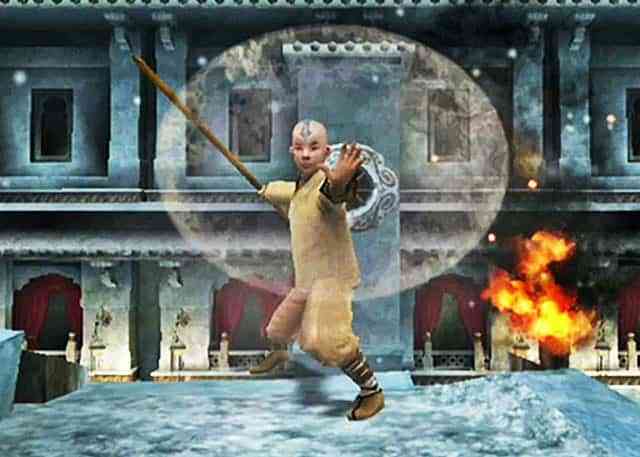A Property With This Much Casual Cabbage Destruction Always Should Have Been a Game
Earlier this summer, my wife sat me down to share her favorite show of all time with me – Avatar: The Last Airbender. It took me a little longer than I would have liked to get into it, as I was distracted by the show’s overbearing “for kids” demeanor (despite some more mature themes later in the series), and the feeling that something key was missing.

So earlier this week when Netflix broke the internet by announcing that the streaming monolith will be rebooting the franchise as a live-action TV series, I found myself simultaneously excited and disappointed – excited to see a proper live-action version of Avatar that wasn’t marred by inherently racist prerogatives and blatant cash-grabbery, but disappointed that it wasn’t something…better. Something fans could really sink their teeth into, that would allow them to take their time and savor every morsel of Avatar’s intriguing and detailed world and story. Something that it should have been in the first place: a video game.
Of course, the franchise has been scorned by the medium in the past with its THQ licensed adaptations in the 2000s receiving mixed reviews at best, and Platinum Games’ 2014 attempt at handling the Korra game being so maligned that it was de-listed from digital game stores this past December – a damn shame, seeing as the two were basically perfect for each other. You don’t have to go far on the internet to find a myriad of fan-articles about the unfortunate bastardization of the series in video games, or Nickelodeon’s poor treatment of the IP as a whole.
![]()
The new Netflix announcement only pours salt on this wound – we’ve already seen the story of Avatar told properly in the passive medium of television, and the adaptation reminds us that animation is still regarded as inherently less important or less valuable than live-action to the general public. The video game medium suffers from this unfortunate misconception as well, but has been making strides in its adolescence with the advent of high-profile, mature, story-driven titles like this year’s God of War, 2015’s The Witcher 3, and 2013’s The Last of Us.
Don’t worry, I’m not suggesting that Avatar should have been a video game for the sake of photorealistic visuals, exploding heads, or shoehorned unicorn-mounted sex scenes – none of those things (especially the latter) would bring anything of value to the property. Avatar should have been a video game for the sake of giving its own world and story the delivery it deserves, as the necessary components are clearly baked into its DNA.
Please, allow me to explain. (Spoilers from here on out for Avatar: The Last Airbender and The Legend of Korra)
Story
For those unfamiliar, the world of Avatar is divided into four nations based on the elements: Air, Earth, Water, and Fire. Select people can control their nations respective element through “bending,” telekinetically controlling the element through martial arts. The Avatar – a symbol of peace and harmony reincarnated through the ages – is the only one who can master all four elements, and in the case of our hero Aang, The Last Airbender, put an end to the hundred year war and colonization by the Fire Nation, by defeating the nation’s ruler: Firelord Ozai. While Aang and his friends/protectors Katara and Sokka spend the duration of the show globe-trotting on his trusty sky-bison sidekick Appa, helping others, and of course, mastering all four elements, the Fire Lord’s disgraced son Prince Zuko is tracking the Avatar down to capture him and restore his honor.
Already it’s one of the video game-iest sounding plots of all time, but the show often takes it a step further.
![]()
In the first couple of episodes, Aang is awoken after a hundred-year slumber by Katara and Sokka of the Southern Water Tribe, where they (and the audience) are then introduced to Prince Zuko, who immediately captures the Avatar. It sets up the story well, and in the case of a video game, is a proper set up for a combat tutorial. It’s not uncommon for games to kick off with a boss fight to show players the ropes of combat, and Aang’s escape from Zuko’s ship would make for adequate teaching of the game’s regular traversal mechanics. Following that, Team Avatar (as our heroes dub themselves later in the series) sets out to teach Aang water bending, and emancipate some small villages from their Fire Nation colonizers. In the show it makes for some nice world building, displaying how the Fire Nation oppresses others and Team Avatar’s propensity for helping others. In a video game, this section of the story would serve the same function, but allow the audience to build a deeper connection with it as they explore the world themselves, at their own pace. In the role of Aang, players could further familiarize themselves with the game’s combat, as well as the roles and functions of its towns and quest-giving residents. Additionally, as the show progresses, Team Avatar expands their party, and more characters come into play from the Fire Nation as well. Aang and co. recruit Toph, a blind earth-bender in season 2, along with Kyoshi Warrior Suki and the villainous Prince Zuko, whose complex character arc leads to him defecting to Team Avatar to teach Aang fire-bending in season 3. Anyone who has ever played an RPG or Warriors title can see how naturally this aspect of the show would fit into a video game. Players could customize and adjust their lineup appropriately depending on the scenario, and open up the possibility of deeper character connections through dialogue and shared experiences.

By allowing the audience to participate in the advancement of the plot, it makes them feel more connected to its consequences. Games like BioWare’s Mass Effect and Dragon Age series, as well as Square Enix’s Deus Ex franchise, thrive on player choice with dialogue choices and sidequests often affecting the overall main story. A: TLA is a little more on rails than that – but it doesn’t have to be. Aang’s liberation of towns could operate in a similar manner to that of modern gaming outposts or towers, opening up new areas to explore and sidequests to help rebuild villages and get its residents lives back on track. Much like in the first season itself, these liberations and sidequests could also open up more player customization options including Team Avatar’s outfits and combat abilities. Speaking of which…
Combat
It’s hard to think of a world more optimized for awesome combat than Avatar. The show itself features some stellar action sequences with immaculate, detailed animation, and each of its bending styles is based on real-life martial arts disciplines. This is why it’s so disappointing that Platinum’s Legend of Korra title back in 2014 was such a dud – between the property’s martial arts roots and Platinum’s signature fast-paced combat, the title should have been a hit, and I for one will forever lament what could/should have been if the game had been given the time and budget it deserved.

The world of Avatar even portrays Aang’s evolution of skill in a video-game-esque manner. In the first season, the team works hard to acquire a water-bending scroll that gives detailed visual instruction on how to perform each of the discipline’s techniques, which Katara and Aang both use. Later in the series, he just gets trained by people proficient in their respective bending practice, but the idea of the scrolls is pretty much as gamey as it gets. Picture this: a combat upgrades menu where each bending discipline is represented by an appropriate scroll, with each image representing a different action – or stage of an action – all of which are acquired through the player spending skill points or experience (similar to Spider-Man or the Yakuza games, either one works). The progression would be simplistic but allow for the combat to have the depth it deserves. Players could switch between elements on the fly and map a basic attack to one of the controller’s face buttons, with combos delivering more powerful attacks and an Avatar State meter that allows for “finishing” moves.
On top of that, characters upgrade their weapons throughout their adventure in a way that feels inspired by video games, as there’s little to no functional reason for it in the show. In season 3, Aang gets a new glider-staff (after his is destroyed) and Sokka forges himself a sword made out of a meteor. After being captured by the Fire Nation, Toph literally invents metal bending to escape (I don’t know how an entire continent of earth-bending people didn’t figure out how to control metals as they’re a part of the earth, but okay), and Katara finds herself pulling off the single most badass thing in the entire IP, blood-bending. In the show, these revelations amount to little more than filler (at least until Korra), but in the context of a game could be tangibly rewarding, combat changing and experience-defining side stories in the same vein as recruiting Tifa in Final Fantasy VII.
Mounts & Traversal
Team Avatar spends literally the entire series either globetrotting or running around enormous, sprawling cities in the world’s varying nations, all in what seems like a matter of a few months. Most of that distance is covered thanks to Appa, but various other forms of transportation are shown over the course of the series. A small group of Fire Nation mercenaries chase our heroes across the world on Mongoose Lizards, soldiers ride Komodo-Rhinos into battle, earth-benders are seen riding Badgermoles, and Zuko spends a short arc riding an Ostrich Horse. In the series’ penultimate episodes, the Avatar himself rides on the back of one of the world’s fabled Lion Turtles, whose entire shell has become a lush jungle island. In The Legend of Korra, the titular character often rides her Polar Bear Dog to get around.

More technological forms of transportation are left to the Fire Nation, particularly enormous warships that Zuko and Iroh spend the majority of Season 1 on and a fleet of zeppelins commanded by Azula later in the series. Team Avatar even ends up riding one at the beginning of Season 3 while tending to an injured Aang. More technology is introduced later on in Korra with the invention of cars taking the world by storm, and their parent company later making war-planes for an enemy faction.
Most interestingly though, Aang and Korra are both seen using their bending-skills to get around on more than one occasion. Aang is often seen riding around on a ball of wind or flying his glider staff via airbending, and Korra frequently bends the water around her to traverse larger bodies of it. In a game, all of these options would make for a much more open and explorable world. Much like in the recent Pokemon games, different mounts could serve different functions: Komodo-Rhinos for tearing through ice barriers, Badgermoles for digging through dark tunnels, or the Ostrich Horse for quickly traveling long distances on land (ya know, like a regular horse). Travel-via-bending could open up other smaller areas hiding away chests, collectibles, and any other small rewards. The Fire Nation ship the team gets in Season 3 could be a home base, similar to ship functions in JRPGs. Players would get to see all the sights the world of Avatar has to offer and be rewarded for it in useful ways leading up to the final battle against Firelord Ozai.
And The Rest!
There’s a ton of other small moments in Avatar and Korra that prove the property would have been, and still could be, better served with a game-first approach, including the show’s art style itself. With phenomenally gorgeous anime titles like Gravity Rush 2 and Dragon Quest XI proving that modern hardware can make cel-shading really sing, this could be the time to right the aesthetic wrongs of the THQ’s licensed adaptations. It would also be nice to see the show’s more cinematic moments presented in glorious HD/4K like Aang’s awakening, Zuko’s fateful round of Agni Kai, and the entire ending of Season 1 at the beautiful Northern Water Tribe.
Additionally, that overbearing “kids show” feeling I mentioned before could inherently be eliminated in the context of a video game. With movies and TV shows, it’s a lot easier to really feel a product’s target audience, and though the same case can often be made for video games with strict genre lines and pointed marketing (like at men, and……………), with passive storytelling aimed at children, the repeated exposition and cheesy jokes can make the feeling hard to ignore and in my case, distracting, especially since other kids shows in the past have been able to shirk it so well. With video games, not only do you often have the option to skip such interactions, but the very nature of the medium seemingly erases it entirely. Games like Super Mario Odyssey, Mega Man, and Katamari Damacy, don’t have that feeling because they aren’t targeted at children, they’re targeted at “everyone.” You could argue that Avatar is for everyone, but it’s still targeted at children (not that that should stop you from enjoying it – I proudly have a large tattoo of BMO from Adventure Time – it just gives context to why the story is told a certain way).

There’s still so much that can be done with the world of Avatar outside of film or television, and after subjecting myself to the god-awful M. Night Shyamalan movie as research for this article (and out of curiosity to see just how bad a film could possibly be – pretty bad), I’m relatively skeptical that live-action could be right for the series at all. A lot of fans love the series’ lighthearted approach to an otherwise serious storyline, and the animation is a pretty key element to keeping that balance, as well as the charm of characters like Sokka or Bumi. That being said, I’m still hopeful that the show will be good, and at the very least it’ll likely bring on some new fans – maybe if it becomes enough of a hit, we can all band together and demand the game that Avatar should have been from the very beginning.